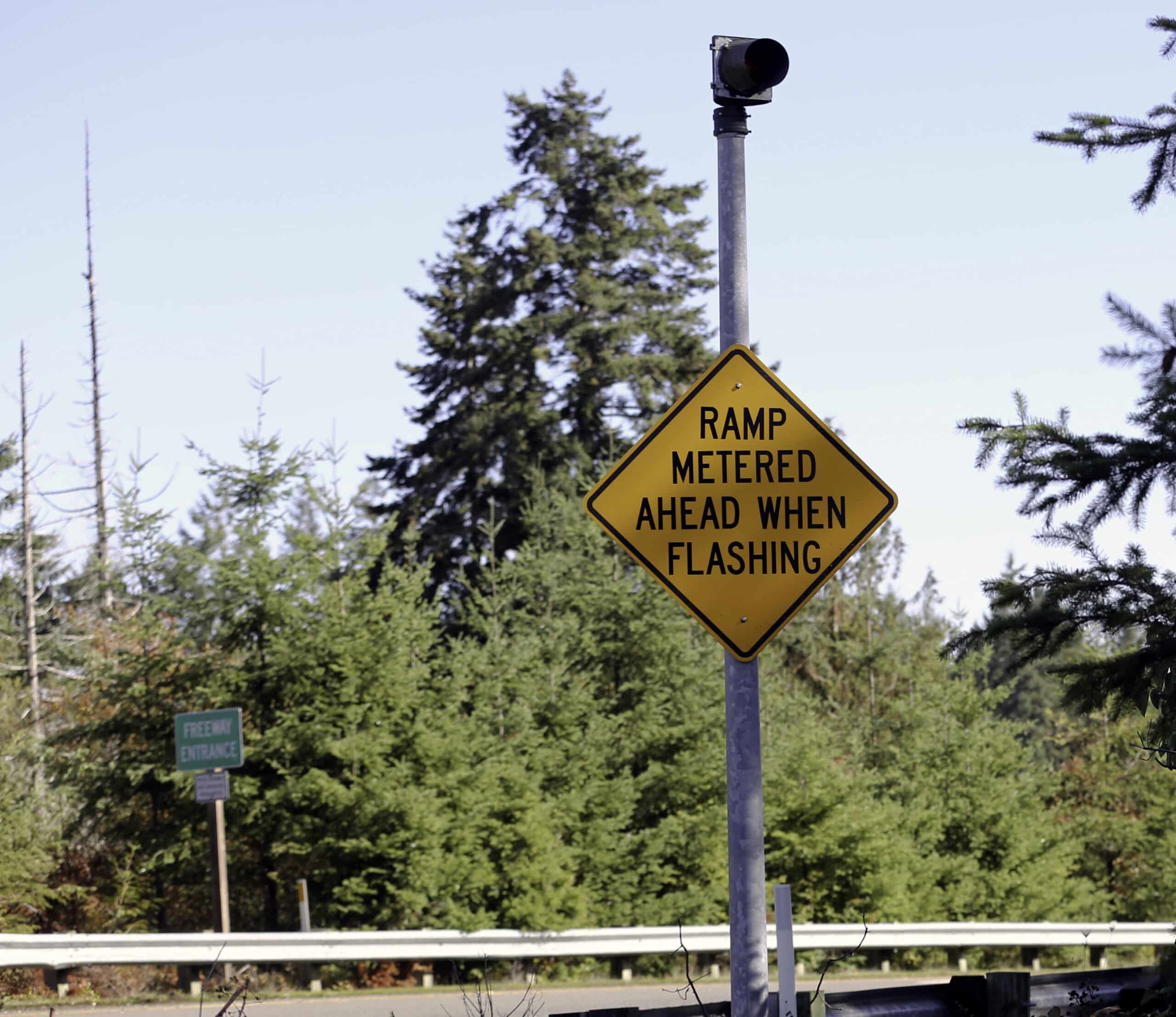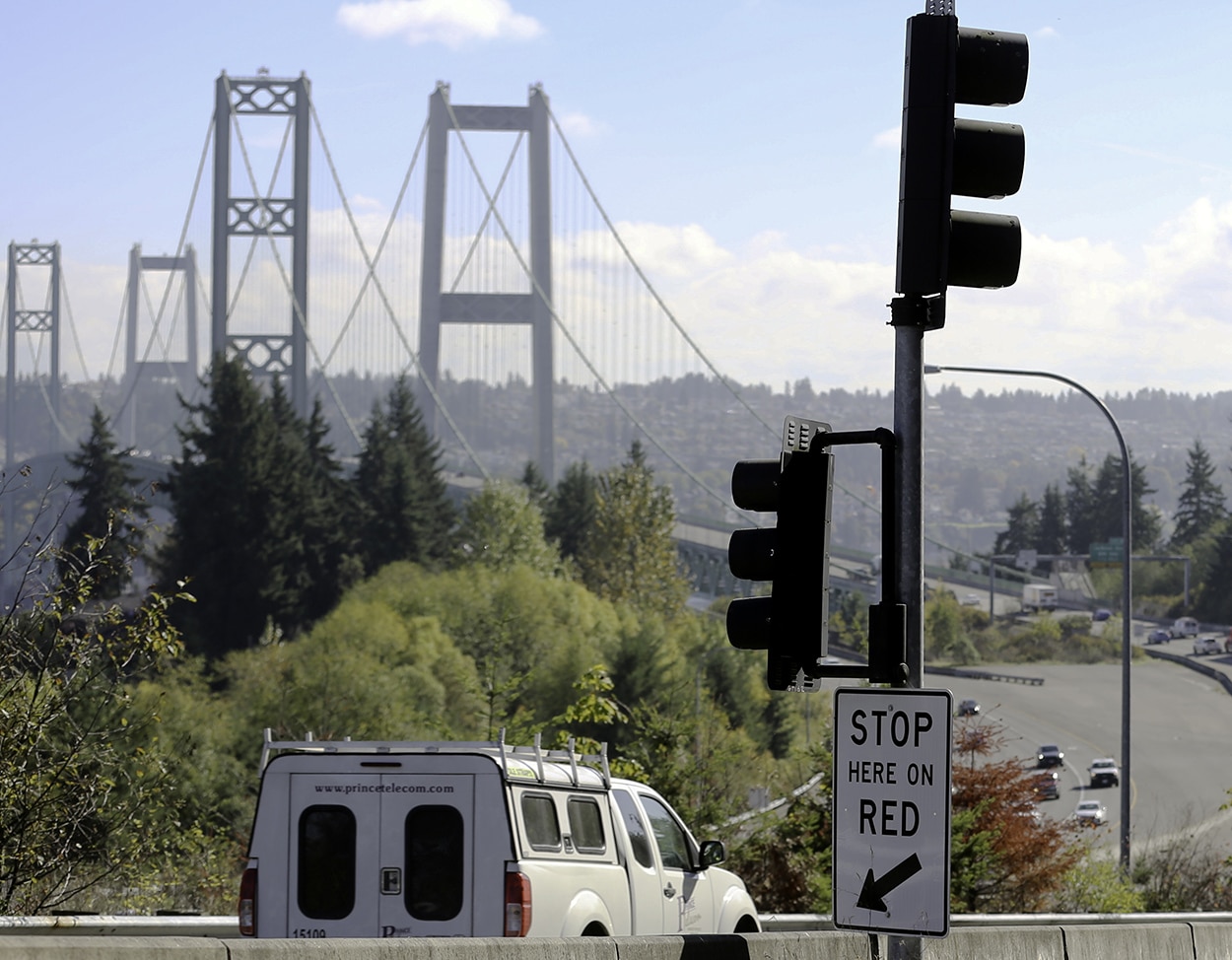Community Government Transportation
Don’t expect to see ramp meters on eastbound Highway 16 used very often
Ramp meters on Gig Harbor-area onramps to eastbound Highway 16 are active as of Monday, Oct. 16. But you probably won’t see them used very often, unless something bad happens.
The Washington State Department of Transportation announced on Oct. 2 that the new meters would be re-activated. They were used during construction of the second Narrows Bridge, but not since that project wrapped up in 2007.
A recent software update allows WSDOT to use the meters only when traffic backs up on eastbound Highway 16. That led to the department’s decision to activate the meters at the eastbound (toward Tacoma) ramps from Highway 302 in Purdy; Burnham, Wollochet and Olympic drives; and 36th and 24th streets.
Ramp meters are traffic signals that allow only one vehicle at a time to merge onto a highway.
“When an on-ramp is metered, only one vehicle is trying to merge, which is more comfortable for drivers on the freeway to accommodate,” according to WSDOT. “It reduces how often and how much drivers slow down for the merging traffic—resulting in fewer disruptions to freeway traffic, including slowdowns and collisions.”

A sign at the onramp from Olympic Drive to eastbound Highway 16 warns of ramp meters.
Not necessarily only during collisions
Not all of those onramps are in Gig Harbor city limits. But Gig Harbor Mayor Tracie Markley expressed reservations about meters on those that are in her Gig-A-Byte newsletter on Oct. 6.
“In the city’s opinion, eastbound metering will greatly affect our local roads and lead to even more congestion and safety issues,” Markley wrote. “If less cars are able to enter the freeway, that means more cars will back up onto our local streets.”
Markley added in the newsletter that “After reaching out to WSDOT to express our concerns, it is now our understanding that the metering will only be active in the event of a (Highway) 16 eastbound accident or bridge incident.”
In an email response to questions from Gig Harbor Now, the department wasn’t willing to go quite that far.
“Based on current traffic volumes, we don’t anticipate the meters will activate on a regular basis. We will most likely see them activate during a collision in the Gig Harbor area on eastbound (Highway) 16,” wrote WSDOT spokeswoman April Leigh. “However, there may be occasions outside collisions when congestion builds high enough for the meters to activate.
Westbound ramp meters
Markley also wrote that the city would prefer meters on westbound ramps, noting “that is a future conversation.” The mayor referred questions to City Administrator Katrina Knutson.
“If the eastbound meters were activated, it is likely surface level city streets would see delays due to queuing at intersections around highway on-ramps,” Knutson wrote in an email to Gig Harbor Now. “During peak travel times, queuing cars attempting to enter the highway are likely to cause stacking onto overpasses, causing surface street congestion and delays.”
The city would prefer westbound (toward Port Orchard) meters because “westbound traffic through Gig Harbor in the (afternoon) peak and on weekends has increased and remains as the highest traffic volume direction/time,” Knutson wrote.

The ramp meter on the onramp from 24th Street to eastbound Highway 16, just west of the Narrows Bridge.
Not imminent
A 2018 state study of the Highway 16 corridor recommended adding westbound meters, but they don’t sound imminent.
The SR 16 Tacoma Narrows Bridge to SR 3 Congestion Study identified westbound ramp meters as a “midterm” recommended solution, which could take around 10 years. It termed the financial investment for such a solution as “low.”
The same study also applied the “mid-term” tag to extending the onramp lengths at the Highway 16-Wollochet interchange.
It termed converting that troublesome interchange to a full diamond as a “long-term” project, possibly within 20 years. That would require a “high” investment level.
